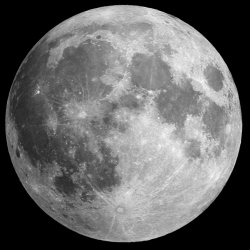
Early last year, researchers at MIT floated the idea of "gas stations" in space that have the potential to cut the costs of missions to the Moon considerably. Now a study out of MIT says that, although possibly a little out of the way, the Moon would make a worthwhile refueling pit stop for manned missions to Mars.
By taking this approach it would be possible to reduce the mass of a launch from Earth by 68 percent. Every gram of mass launched from Earth into space costs serious money, so any reduction in launch weight can mean major savings. If a mission were able to top up on fuel at the Moon for its long trip to the Red Planet, then that fuel would not need to be launched from Earth and the mission could launch with a fraction of the fuel it would actually need.
However, as you might know, the Moon isn’t home to any refueling depot just yet, there’s not even a Starbucks there yet, so the study makes a few assumptions about what technologies may be established on the Moon by the time a manned mission to Mars is ready to get of the ground.
Namely, the study assumes the lunar soil and water found on the Moon could be mined and converted into fuel by infrastructure yet to be built on the lunar surface and that this fuel could then be launched in tankers from the Moon to depots at Lagrange points, where a Mars-bound crew would rendezvous with them and use them to refuel before heading on their way.
"This is completely against the established common wisdom of how to go to Mars, which is a straight shot to Mars, carry everything with you," says Olivier de Weck, a professor of aeronautics and astronautics and of engineering systems at MIT. "The idea of taking a detour into the lunar system … it’s very unintuitive. But from an optimal network and big-picture view, this could be very affordable in the long term, because you don’t have to ship everything from Earth."
Such an approach would replace the "carry-along" method used by the Apollo missions to the Moon, where everything was carried with the crews at all times, and the "resupply approach," like that used by the International Space Station (ISS), where resources are replenished on a regular basis. Called “in-situ resource utilization,” crews would make use of materials produced in space, such as rocket fuel produced from water ice, which has been found on the Moon and Mars.
The study is based on the PhD thesis of Takuto Ishimatsu, now a postdoc at MIT, who believes the results demonstrate the importance of developing infrastructure in space to produce resources. While such infrastructure wouldn’t be necessary for a single trip to Mars, it would make repeated journeys much more sustainable.
"Our ultimate goal is to colonize Mars and to establish a permanent, self-sustainable human presence there," says Ishimatsu. "However, equally importantly, I believe that we need to ‘pave a road’ in space so that we can travel between planetary bodies in an affordable way."
